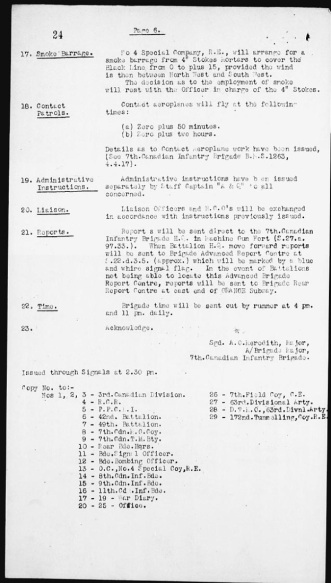On the eve of the 100th anniversary of the Battle of Vimy Ridge I thought it appropriate to share this wonderful artefact from the day. This 20″ x 23″ trench map focuses on a section of the line assigned to the 7th Brigade of the 3rd Canadian Division. It was for many years in the possession of Lt. Richard H.W. Clowes, a former member of the 49th Battalion (Edmonton Regiment) CEF.
Richard Herbert Wortley Clowes was born in Cape Town on Aug. 27, 1890 to English parents and emigrated to Canada in 1912 after serving three years with the 10th London Regiment. A Civil Engineer by trade, he settled in Edmonton and married prior to joining the 31st Battalion (Alberta) CEF in November 1914. In January 1915 Clowes was commissioned a Lieutenant in the 49th Battalion (Edmonton Regiment) CEF and sailed with the battalion to England on June 4th.
The 49th arrived in France on October 9th and entered the trenches near English Farm exactly one week later. On the afternoon of October 19, 1915 Lt. Clowes was seriously wounded in the leg by a rifle grenade forcing his evacuation to the 14th General Hospital in Bolougne where he was reported as “dangerously ill”. He recovered sufficiently to be evacuated to England where his right leg was amputated at the thigh. Lt. Richard HW Clowes would spend the remainder of the war working in England at the Canadian Engineers Training Depot as well as the Canadian Records Office where he began work just a week prior to the assault on Vimy Ridge.
While Clowes was settling into his new assignment the 49th were honing their rifle and machine gun skills on ranges near Bruay, northwest of Vimy. By April 6th the battalion was in Villers-au-Bois making final preparations for the assault scheduled to take place on April 9th. In their Regimental History,”A City Goes to War“, the 49th Battalion’s role was described as “playing Universal Aunts to the assault battalions“, that is to support their 7th Brigade comrades in the 42nd Battalion, the Royal Canadian Regiment (RCR) and the Princess Patricia’s Canadian Light Infantry (PPCLI). Crucially they were to mop up after the other three battalions enabling those assaulting troops to push through and keep to their very strict timetable.
The trench map is particularly fascinating because of the numerous pencil annotations which correspond to the 7th Brigade’s Intermediate and Final Objectives. Their Intermediate objective, known as the “Black Line” followed a section of BEGGAR trench and is clearly marked by a dashed pencil line.
An appendix in the 49th’s War Diary includes the 7th Brigade’s Operational Order No. 70 (see gallery below) designating a number of strong points along the Brigade’s Final objective known as the “Red Line“. The circular pencil marks on the map, labelled “E” through “J”, match up very closely to the strong point coordinates specified in Operational Order No. 70. Strong points “J” & “L” were assigned to the 42nd Battalion, “H” & “G” to the P.P.C.L.I. and “F” & “E” to the R.C.R.. Points “A” through “D” as well as other markings beginning approximately halfway between Ecole Commune and La Folie Farm were presumably assigned to the 8th Brigade which advanced on the 7th’s right flank. I suspect the positions with the prefix “4” are those to be occupied by the 4th Battalion, Canadian Mounted Rifles.
Between the Intermediate and Final Objectives are three pencil circles labeled “5”, “6” and “7”. I believe these to be the garrisons of 50-men each referred to in the Operational Order No. 7 (“#9 . Strong Points” on page 3). Strong Point “7” was assigned to the 42nd, “6” to the P.P.C.L.I. and “5” to the R.C.R..

A closeup showing pencil markings relating to the 7th Brigade’s Intermediate and Final Objectives on April 9, 1917
How this fascinating map made it’s way to Lt. Clowes in England remains a mystery but what is certain is that he finished the war a Captain and moved to British Columbia in 1919. He served as a Major in the Canadian Scottish Regiment for many years before his death on Thetis Island on August 21, 1964, aged 74. Richard H.W. Clowes is buried in Chemanius on Vancouver Island.
Need help with your research? I provide guidance and customized research assistance to individuals, community groups and institutions!
If you would like to be notified when future Military and Family History articles are published please:
Categories: Map, Regimental Histories, Researching, Richard H.W. Clowes, Vimy, War Diaries








Steve, we thank you for your care and determination in allowing us to follow your findings regarding Canada in WW 1and 2,B.C. Boys in particular in your “doing our bit”. CBC showcased Sgt. Hope,2nd CMR Victoria, from their telecast from Vimy! Next
year, the Battle of the Somme, 1918 with Canadian Troops once again leading the pact. How can we forget? Your devoted research is very much appreciated as you share details of your continued diligence. My sincere thanks, again…Lynn
Hey Steve, my maternal grandfather was a signalman with the 3rd Canadian Div, 7th Bgd, PPCLI at Vimy Ridge, luckily he came through it unscathed. I was wondering if by chance I could get a “flat” copy of the Capture of Vimy, La Foile Wood map to add to our family tree?
Hi Peter, I’m afraid I no longer have a copy of “A City Goes to War” so I’m unable to provide a flat copy of it. Thanks, Steve.